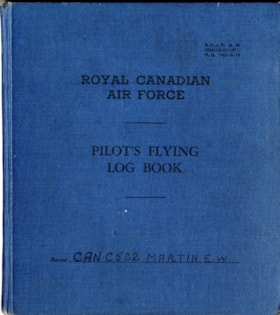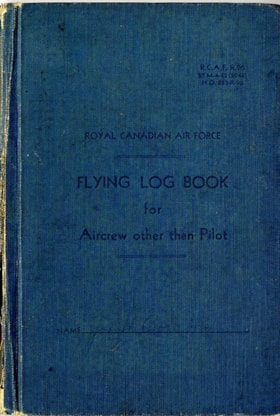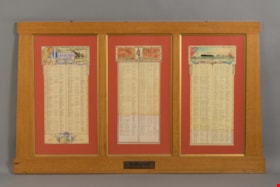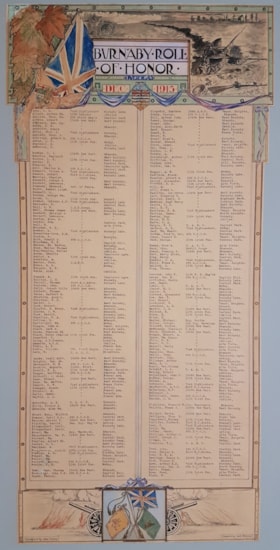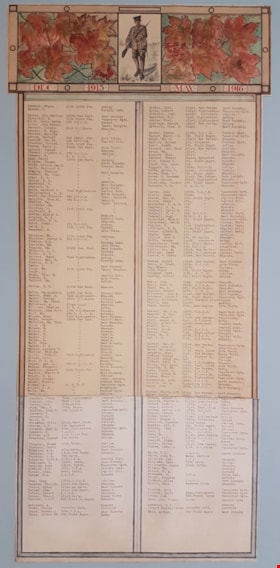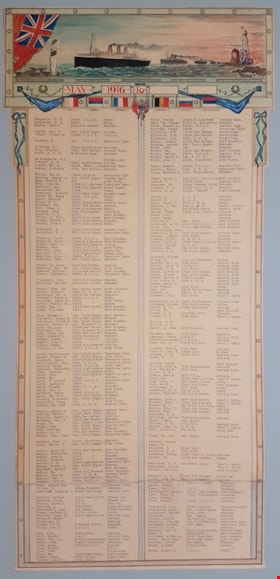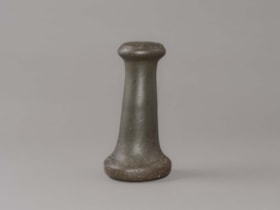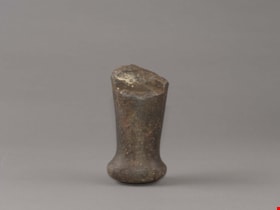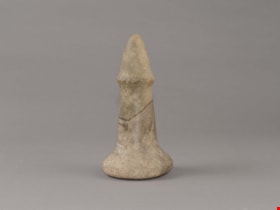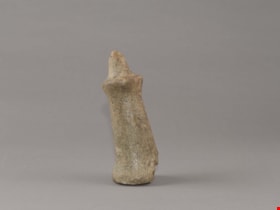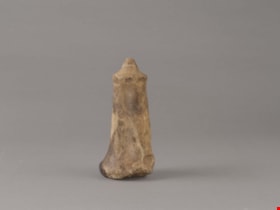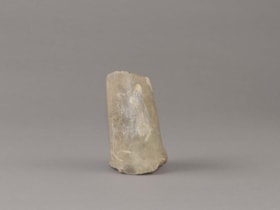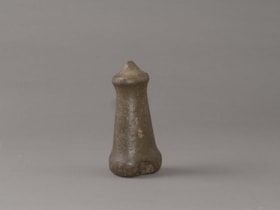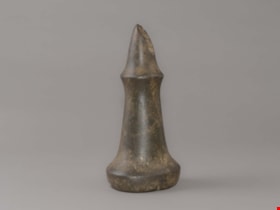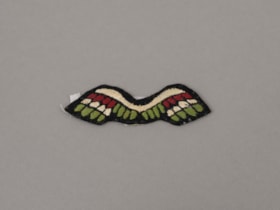More like 'John Shaw'
Narrow Results By
Subject
- Agriculture 1
- Agriculture - Farms 2
- Animals - Fish 1
- Archeological Specimen 5
- Buildings - Commercial - Grocery Stores 1
- Buildings - Commercial - Restaurants 2
- Buildings - Commercial - Service Stations 1
- Buildings - Industrial - Saw Mills 1
- Buildings - Religious - Mosques 1
- Businesses 1
- Cemeteries 1
- Ceremonies - Funerals 1
Person / Organization
- Air Raid Precautions (A.R.P.) 3
- Arora, Maninder 1
- Babey, Beverley 1
- Bailey, Joan 8
- British Columbia Hydro and Power Authority 1
- British Columbia Organization to Fight Racism 1
- Burnaby Central Secondary School 1
- Burnaby South High School 1
- Burnaby Symphony Orchestra 1
- Burquest 2
- Canada Way Food Market 1
- Canadian Farmworkers Union 1
Interview with Norman Dowad
https://search.heritageburnaby.ca/link/museumdescription19638
- Repository
- Burnaby Village Museum
- Date
- [1890-2023] (interview content), interviewed 14 Aug. 2023
- Collection/Fonds
- Burnaby Village Museum fonds
- Description Level
- Item
- Physical Description
- 1 sound recording (wav) (61 min., 37 sec.) + 1 sound recording (mp3) (61 min., 37 sec.)
- Scope and Content
- Item consists of a recording of an oral history interview with Norman Dowad conducted by Burnaby Village Museum Registrar, Eric Damer on August 14, 2023. 00:00:00 – 00:14:38 Norm shares biographical information about himself and background information on the Dowad family. Norm conveys information …
- Repository
- Burnaby Village Museum
- Collection/Fonds
- Burnaby Village Museum fonds
- Series
- Museum Oral Histories series
- Subseries
- Many Voices Project Interviews subseries
- Description Level
- Item
- Physical Description
- 1 sound recording (wav) (61 min., 37 sec.) + 1 sound recording (mp3) (61 min., 37 sec.)
- Material Details
- Interviewer: Eric Damer Interviewee: Norman Dowad Location of Interview: Burnaby Village Museum Interview Date: August 14, 2023 Total Number of tracks: 1 Total Length of all Tracks: 01:14:37 Digital master recording (wav) was converted to mp3 for access on Heritage Burnaby
- Scope and Content
- Item consists of a recording of an oral history interview with Norman Dowad conducted by Burnaby Village Museum Registrar, Eric Damer on August 14, 2023. 00:00:00 – 00:14:38 Norm shares biographical information about himself and background information on the Dowad family. Norm conveys information about his grandfather Samuel Dowad's immigration to Canada and his father Wilfred Dowad's military service and successes as a property developer. 00:14:39 – 00:17:26 Norm provides background information on his mother’s side of the family. 00:17:27 – 00:31:36 Norm talks about his childhood, growing up in the Deer Lake neighbourhood, his early education in Burnaby and sports that he played. 00:31:37 – 00:39:59 Norm talks about his educational experiences attending Simon Fraser University, University of British Columbia and Osgoode Hall law school and information regarding his law career. 00:40:00 – 00:45:03 Norm reflects on his childhood growing up in Burnaby and on his experiences and relationships as a student and in his career as a lawyer. 00:45:04 – 01:01:37 Norm talks about his siblings and shares information about family property development projects as well as career and business successes. In closing he talks about research that he’s done through Archives Canada on his grandfather Sam Dowad and father Wilfred Dowad.
- History
- Interviewee biography: Norm Dowad was born in Burnaby, December 1948 to parents Wilfred “Wilf” (1925-2011) and Cherry Dowad. His father, Wilfred (1925-2011) was born in Winnipeg to parents Samuel “Sam” (Salim in Arabic) Esper Dowad (1895-1969) and Martha (Shaheen) Dowad (1894-1955). Sam and Martha Dowad were both born in a province of the Ottoman Empire which is now present day Lebanon. In 1912, while trying to immigrate to Canada, several of Sam’s relatives including his mother died tragically as steerage passengers on the ill fated Titanic. In 1913, at the age of 18 years, Sam immigrated to Canada to join other family members who'd already arrived here safely. As a new immigrant in Canada, Sam worked with other Labanese immigrants in Saskatchewan, Manitoba and the United States. In December 1921, Sam's wife, Martha immigrated to Canada arriving by ship in St. John, New Brunswick. Sam and Martha established their home in Winnipeg where they began to start a family. Their first two children died in infancy and son Wilfred was born in 1925 and daughter Kathleen was born in 1926. While living in Winnipeg, Sam worked as a grocer and in the 1930’s he got work as a farmer in a nearby town. In 1943, Wilf joined the Royal Canadian Naval Volunteer Reserve (RCVNR) and served as a gunner on merchant ships during World War II. In 1945, while Wilf was away serving, his parents, Sam and Martha moved to Burnaby. After discharge in 1945, Wilf joined his parents in Burnaby, began working at Fraser Mills and commenced his studies in construction and drafting. In 1949, with his father’s help Wilf acquired a lot next door to his parents’ home and built his first apartment block. After Martha died in 1954, Sam moved to Kelowna where he bought an orchard. Sam remarried in 1957 to Naomi “Mamie” (David) Dowad (1899-1978) who was also from a Lebanese family. Sam and Mamie lived in Kelowna until the mid 1960s when they moved to White Rock. While living in Burnaby, Wilf met and married Cherry Piggott and the couple had six children; Norm, Bruce, Michael, Kathie, Phil and Tom. In 1955, Wilfred Dowad established "W. Dowad Ltd." and over the years he was successful in developing and subdividing land to build housing and commercial developments in Burnaby, New Westminster and Vancouver. Wilf was the first president of the Burnaby Winter club and was an active member of the Junior Chamber of Commerce holding office at the local, provincial and national level. In 1970, Wilf purchased 238 acres of land bordering the Sḵwx̱wú7mesh River and relocated there the following year. While living in Sḵwx̱wú7mesh, Wilf became actively engaged in local business and community affairs. Wilf was later remarried to Grethe Dowad and he died in Sḵwx̱wú7mesh in 2011.Wilf's six children are the sole owners of "W.Dowad Ltd." and his daughter, Kathie Smillie is the president and CEO. While growing up in Burnaby, Norm Dowad attended Schou Street School, Douglas Road School, Kensington School and graduated from Burnaby Central Secondary School. Following graduation from high school, Norm attended Simon Fraser University for one year, travelled in Europe, attended University of British Columbia and obtained his law degree from Osgoode Hall at York University. Norman has been practicing law for 49 years and has his own law practice that he operates out of Vancouver. Interviewer biography: Eric Damer is a Burnaby Village Museum Interpreter, Museum Registrar, Researcher and Blacksmith. Eric pounded hot steel for the first time in 1977 in junior high. Fifteen years later, he joined Burnaby Village Museum where he has smithed for three decades. He also provides historical research for museum exhibits and special projects. Outside the museum, Eric is a social historian with a special interest in educational history.
- Creator
- Burnaby Village Museum
- Subjects
- Agriculture - Farms
- Education
- Persons - South Asian Canadians
- Migration
- Sports
- Sports - Football
- Wars - World War, 1939-1945
- Names
- Dowad, Norman W. "Norm"
- Dowad, Samuel Esper "Sam"
- Dowad, Wilfred "Wilf"
- Dowad, Naomi "Mamie" David
- Dowad, Martha Elias Shaheen
- Dowad, Kathleen "Kay"
- Rideout, Dr. John Anthony
- Burnaby Central Secondary School
- Douglas Road School
- W. Dowad Limited
- Responsibility
- Damer, Eric
- Geographic Access
- Buckingham Avenue
- Deer Lake
- Street Address
- 5533 Buckingham Avenue
- Accession Code
- BV023.16.16
- Access Restriction
- No restrictions
- Reproduction Restriction
- No known restrictions
- Date
- [1890-2023] (interview content), interviewed 14 Aug. 2023
- Media Type
- Sound Recording
- Historic Neighbourhood
- Burnaby Lake (Historic Neighbourhood)
- Planning Study Area
- Morley-Buckingham Area
- Notes
- Title based on contents of item
- Transcription available
Documents
Audio Tracks
Interview with Norman Dowad, [1890-2023] (interview content), interviewed 14 Aug. 2023
Interview with Norman Dowad, [1890-2023] (interview content), interviewed 14 Aug. 2023
https://search.heritageburnaby.ca/media/hpo/_Data/_BVM_Sound_Recordings/Oral_Histories/2023_0016_0016_002.mp3honour roll
https://search.heritageburnaby.ca/link/museumartifact79416
- Repository
- Burnaby Village Museum
- Accession Code
- X2834
- Description
- Roll of Honor for soldiers in World War II who came from Burnaby; large wooden tripartate frame with typed lists of names in each panel. "Burnaby Roll of Honour World War II". The honour roll and frame was made in 2005 by the request of the Heritage Commission.
- Object History
- Honour rolls that recognize individuals that serve in the time of war have been used by communities throughout Canada and the Commonwealth as a traditional act of remembrance. These memorials consist of a list of veterans that is compiled to ensure that names of all service men and women are included, with their rank and service acknowledged. The "Heroic Dead" have been traditionally marked on Canadian honour rolls with the addition of a cross and/or maple leaf beside the honoured name. Typically this sombre memorial is crafted in traditional style using calligraphy for the names listed on the "tablets" and native woods and brass for the frame materials. Burnaby has a proud history of men and women who served by volunteering for active service. The community honoured its war heroes during World War I with an impressive Honour Roll crafted by civic staff and dedicated at the former Municipal Hall at Edmonds on July 14, 1916. The intention of this memorial was to "keep the record bright before the people of the municipality". At the conclusion of this war over 1,200 names of service men and women were listed including over 90 "Heroic Dead" who paid the "ultimate sacrifice". The Burnaby Honour Roll (BV004.54.1) remained as an important civic memorial on public display in the old municipal hall and was the focus of many annual Remembrance Day services. It consisted of a wooden frame with three paper "rolls."
- Country Made
- Canada
- Province Made
- British Columbia
- Site/City Made
- Burnaby
- Subjects
- Wars - World War, 1939-1945
Images
Documents
Interview with Shirley Cohn
https://search.heritageburnaby.ca/link/museumdescription19597
- Repository
- Burnaby Village Museum
- Date
- [1926-2023] (interview content), interviewed 2023
- Collection/Fonds
- Burnaby Village Museum fonds
- Description Level
- File
- Physical Description
- 2 sound recordings (wav) (16 min., 57 sec.) (50 min., 36 sec.) + 1 sound recording (mp3) (50 min., 36 sec.)
- Scope and Content
- File consists of two recordings of oral history interviews with Shirley Cohn conducted by Burnaby Village Museum Registrar and Researcher, Eric Damer. The first interview was conducted on April 14, 2023 and the second interview was conducted on September 6, 2023. Summary of interview conducted on …
- Repository
- Burnaby Village Museum
- Collection/Fonds
- Burnaby Village Museum fonds
- Series
- Museum Oral Histories series
- Subseries
- Many Voices Project Interviews subseries
- Description Level
- File
- Physical Description
- 2 sound recordings (wav) (16 min., 57 sec.) (50 min., 36 sec.) + 1 sound recording (mp3) (50 min., 36 sec.)
- Material Details
- Interviewer: Eric Damer Interviewee: Shirley Cohn Location of Interviews: Burnaby Village Museum Interview Dates: April 14, 2023 and September 6, 2023 Total Number of Tracks: 2 Total Length of all Tracks: 67 min., 33 sec. Digital master recording (wav) recording of second interview (50 min., 36 sec.) was converted to mp3 for access on Heritage Burnaby
- Scope and Content
- File consists of two recordings of oral history interviews with Shirley Cohn conducted by Burnaby Village Museum Registrar and Researcher, Eric Damer. The first interview was conducted on April 14, 2023 and the second interview was conducted on September 6, 2023. Summary of interview conducted on September 6, 2023: 0:00 – 16:09 Shirley Cohn shares background information about her parents who immigrated to Detroit from Hungary in the 1930’s. Shirley recalls what it was like for her parents being Jewish during World War II and how many of their relations were killed in the Holocaust. Shirley talks about her Jewish Hungarian heritage, what it was like growing up in Detroit, the Jewish community in Detroit and the Jewish holidays and traditions that her family celebrated. Shirley recalls her high school and University education and experiences, starting her career in social work and how she met her future husband, Theodore “Ted” Cohn. 16:10 – 18:27 Shirley shares the story about her father in law, Dr. Daniel E. Cohn who was Harry Houdini’s doctor at the time of his death in Detroit on Oct. 31, 1926. Shirley explains that she donated some of Dr. Daniel E. Cohn’s original documents pertaining to this event to the New York Public Library. 18:28 – 26:04 Shirley describes her experiences living and working in London Ontario while her husband was a professor at University of Western Ontario and Shirley worked as a social worker in family services. Shirley recalls experiences of anti-Semitism while living in London. Shirley talks about moving to Burnaby in 1977 after her husband took a job as a professor at Simon Fraser University. Shirley describes her experiences living in Burnaby, raising a family and working as a social worker at Burnaby General Hospital. 26:05 – 26:18 Shirley talks about her interests outside of work, her family’s involvement in the Burquest Jewish Community Association and being a member of Temple Shalom. Shirley conveys information about other Jewish synagogues in Greater Vancouver, describes Reform Judaism at Temple Shalom and some Jewish cultural practices that her family has been involved with. 26:19 – 33:12 Shirley describes her family’s experiences living in the Garden Village nieghbourhood in Burnaby, her involvement sharing Jewish cultural traditions at her children’s school and recalls her children’s experiences attending school in Burnaby. 33:13 – 40:46 Shirley conveys the career paths that her children took and talks about what she likes about living in Burnaby including; the walking and hiking trails, the cultural and art performances and her involvement in local politics. Shirley talks about her and her husband’s involvement in the SFU retirees association and the SFURA walking and hiking group. Shirley reflects on her husband’s academic career, experiences teaching at SFU and the role of the Hillel Jewish Students Association at the Simon Fraser University. Shirley talks about the difficulties of discussing political views about the State of Israel. Shirley describes some traditional Jewish foods, the roles that they play and a local bakery that carries Jewish bake goods. 40:47 – 50:36 Shirley describes her current daily life in Burnaby; working one day a week as a social worker, gardening, her involvement at Temple Shalom and the Jewish Community Centre and how she travels in Burnaby. Shirley recalls the changes that she’s encountered in Burnaby and in her career over the years, shares a story about her husband losing his thesis and describes what Burnaby was like while she was raising her family. Shirley shares what she thinks about the areas of development in Burnaby and conveys the importance of having parks and affordable housing. In closing, Shirley reflects on what is like to be a Jewish person living in Burnaby.
- History
- Interviewee biography: Shirley Tanner was born in Detroit in 1947. Her parents were both Jewish. Her mother fled Hungary as a refugee in 1939, while her father emigrated from there in 1934. Shirley attended public schools in Detroit, and then studied social work at the University of Michigan. After marriage, Shirley and Ted Cohn moved to Ontario where Ted had a faculty appointment at the University of Western Ontario in political science. Six years later they moved to Burnaby for Ted’s teaching position in political science at Simon Fraser University. While living in Burnaby, Shirley took care of a growing family while also practicing social work, mainly at Burnaby Hospital. The family enjoyed Burnaby’s libraries and parks. Shirley helped out at her children’s schools, became a Block Watch captain, and the family joined Burquest Jewish Community Association. The Cohns later became members of Temple Sholom Synagogue in Vancouver, while remaining in Burnaby. Beginning in 2009, Ted started an informal hiking group for retired Simon Fraser University staff. This group has been open to others, so now has a wide variety of members. Shirley has also helped lead hikes in the region. Interviewer biography: Eric Damer is a Burnaby Village Museum Interpreter, Museum Registrar, Researcher and Blacksmith. Eric pounded hot steel for the first time in 1977 in junior high. Fifteen years later, he joined Burnaby Village Museum where he has smithed for three decades. He also provides historical research for museum exhibits and special projects. Outside the museum, Eric is a social historian with a special interest in educational history.
- Creator
- Burnaby Village Museum
- Subjects
- Education
- Recreational Activities - Hiking
- Organizations
- Organizations - Societies and Clubs
- Migration
- Persons - Jewish Canadians
- Religions - Judaism
- Social Issues - Racism
- Social Issues
- Wars - World War, 1939-1945
- Names
- Cohn, Dr. Daniel E.
- Cohn, Shirley
- Cohn, Theodore H. "Ted"
- Burquest
- Hillel Jewish Students Association
- Simon Fraser University
- SFURA walking and hiking group
- Simon Fraser University Retirees Association "SFURA"
- Temple Shalom
- Responsibility
- Damer, Eric
- Accession Code
- BV023.16.1
- Access Restriction
- No restrictions
- Reproduction Restriction
- No known restrictions
- Date
- [1926-2023] (interview content), interviewed 2023
- Media Type
- Sound Recording
- Notes
- Title based on contents of file
- Summary, recording and transcript of second interview available on Heritage Burnaby
Images
Documents
Audio Tracks
Interview with Shirley Cohn, [1926-2023] (interview content), interviewed 2023
Interview with Shirley Cohn, [1926-2023] (interview content), interviewed 2023
https://search.heritageburnaby.ca/media/hpo/_Data/_BVM_Sound_Recordings/Oral_Histories/2023_0016_0001_003.mp3newsletter
https://search.heritageburnaby.ca/link/museumartifact39839
- Repository
- Burnaby Village Museum
- Accession Code
- BV999.17.14
- Description
- Newsletter, "The Burnaby Warden's Gazette"; editor "J. Allbuary Clou"; c. 1940s; mimeographed page; paper is yellowed
- Object History
- Newsletter was referred to by Harry Charles Cutress who was a member of the Burnaby Air Raid Precautions in South Burnaby during the 1940s.
- Category
- 08. Communication Artifacts
- Classification
- Documentary Artifacts - - Other Documents
- Object Term
- Serial
- Country Made
- Canada
- Province Made
- British Columbia
- Site/City Made
- Burnaby
- Publication Date
- [194-]
Images
Documents
newsletter
https://search.heritageburnaby.ca/link/museumartifact39840
- Repository
- Burnaby Village Museum
- Accession Code
- BV999.17.15
- Description
- "Burnaby Civil Gazette Defence", "Office of the Controller"; "Nov.-Dec. 1943", "Edmonds, B.C."; "Cutress, H." "3724 Rumble St."; paper is yellowed; 2 pages doubled sided; mimeographed
- Object History
- Newsletter is addressed to Harry Charles Cutress who was an active member of the Burnaby Air Raid Precautions in South Burnaby.
- Category
- 08. Communication Artifacts
- Classification
- Documentary Artifacts - - Other Documents
- Object Term
- Serial
- Country Made
- Canada
- Province Made
- British Columbia
- Site/City Made
- Burnaby
- Title
- Burnaby Civil Defence Gazette
- Publication Date
- Nov-Dec 1943
Images
Documents
Pilot's flying log book
https://search.heritageburnaby.ca/link/museumdescription15039
- Repository
- Burnaby Village Museum
- Date
- 1939-1940
- Collection/Fonds
- Elmer Wilson Martin fonds
- Description Level
- Item
- Physical Description
- 1 book
- Scope and Content
- Item consists of a Royal Canadian Air Force, Pilot's Flying Log Book belonging to Elmer Wilson Martin (Can. C522). Book contains entries between June 29 and December 23, 1939 and January 13 and July 31, 1940 and Sept. 1940. Pilot training took place at Camp Borden where training for pilots, navigat…
- Repository
- Burnaby Village Museum
- Collection/Fonds
- Elmer Wilson Martin fonds
- Description Level
- Item
- Physical Description
- 1 book
- Scope and Content
- Item consists of a Royal Canadian Air Force, Pilot's Flying Log Book belonging to Elmer Wilson Martin (Can. C522). Book contains entries between June 29 and December 23, 1939 and January 13 and July 31, 1940 and Sept. 1940. Pilot training took place at Camp Borden where training for pilots, navigators, air gunners, air bombers and flight engineers for the Royal Canadian Air Force, the Royal Air Force and other Commonwealth air forces. According to the log book, Elmer Martin was trained on various aircraft at this location. Canadian Forces Base Borden is located in Ontario.
- Accession Code
- BV019.37.10
- Access Restriction
- No restrictions
- Reproduction Restriction
- May be restricted by third party rights
- Date
- 1939-1940
- Media Type
- Textual Record
- Scan Resolution
- 600
- Scan Date
- February 4, 2021
- Scale
- 100
- Notes
- Title based on contents of item
Images
Documents
RCAF Flying Log Book and navigation maps
https://search.heritageburnaby.ca/link/museumdescription20321
- Repository
- Burnaby Village Museum
- Date
- 1943-1945
- Collection/Fonds
- Joseph H.C. Corsbie fonds
- Description Level
- File
- Physical Description
- 1 book (hardcover) + 1 map : b&w lithograph on paper with annotations in col. ink ; 34.5 x 40.5 cm + 7 maps : b&w lithograph on paper with annotations in col. ink ; 41.5 x 33.5 cm
- Scope and Content
- File consists of a "Royal Canadian Air Force Flying Log Book for Aircrew other than Pilot" assigned to J.H. Corsbie along with eight aircraft navigation maps for flying at night titled; "Newcastle to Prague" and "Hull to Venice" with navigational markings created by Joseph H. Corsbie. Entries in lo…
- Repository
- Burnaby Village Museum
- Collection/Fonds
- Joseph H.C. Corsbie fonds
- Description Level
- File
- Physical Description
- 1 book (hardcover) + 1 map : b&w lithograph on paper with annotations in col. ink ; 34.5 x 40.5 cm + 7 maps : b&w lithograph on paper with annotations in col. ink ; 41.5 x 33.5 cm
- Material Details
- Scale : 1:2,890,000 (approx.)
- Scope and Content
- File consists of a "Royal Canadian Air Force Flying Log Book for Aircrew other than Pilot" assigned to J.H. Corsbie along with eight aircraft navigation maps for flying at night titled; "Newcastle to Prague" and "Hull to Venice" with navigational markings created by Joseph H. Corsbie. Entries in log book provide detailed records of Corsbie's training and flights undertaken on RCAF service aircraft between March 1943 and July 1945 along with units which Corsbie served as observer or air gunner and the aircraft in which he's flown (1943-1944).
- Other Title Information
- Full title of book "Royal Canadian Air Force Flying Log Book for aircrew other than Pilot"
- Responsibility
- Royal Canadian Air Force
- Accession Code
- BV020.31.44
- Access Restriction
- No restrictions
- Reproduction Restriction
- No known restrictions
- Date
- 1943-1945
- Media Type
- Textual Record
- Cartographic Material
- Scan Resolution
- 600
- Scan Date
- 19-09-2023
- Notes
- Title based on contents of file
- 7 maps titled "Hull to Venice / Heights in Feet" include identifier below bottom border reading: "O.R.1373 / Spot-Height Corrections, 1944"_"Compiled and drawn at H.Q./G.S.G.S.-1943"
- 1 map titled "Newcastle to Prague / Heights in Feet" include identifier below bottom border reading: "O.R.1373 / Spot-Height Corrections, 1944"_" H.Q./G.S.G.S.-1943"
Images
Documents
syllabus
https://search.heritageburnaby.ca/link/museumartifact39841
- Repository
- Burnaby Village Museum
- Accession Code
- BV999.17.16
- Description
- Page, "Burnaby Warden Service" "Syllabus of Training" "Nov. 1/43 - Mar. 30/44"; one page printed both sides
- Object History
- Syllabus belonged to Harry Charles Cutress who was a volunteer with the Burnaby Air Raid Precautions service in South Burnaby during the 1940s.
- Category
- 08. Communication Artifacts
- Classification
- Documentary Artifacts - - Instructional Documents
- Object Term
- Syllabus
- Publication Date
- November 1-March 30, 1944
Images
Documents
Interview with Honourable Raj Chouhan
https://search.heritageburnaby.ca/link/museumdescription19349
- Repository
- Burnaby Village Museum
- Date
- [1957-2022] (interview content), interviewed 2 Dec. 2022
- Collection/Fonds
- Burnaby Village Museum fonds
- Description Level
- Item
- Physical Description
- 1 sound recording (wav) + 1 sound recording (mp3) (49 min., 21 sec.)
- Scope and Content
- Item consists of an oral history interview with Honourable Raj Chouhan conducted by Burnaby Village Museum Assistant Curator, Kate Petrusa. Raj Chouhan shares his ancestral background and personal experiences immigrating to Canada from India in 1973 and living and working in Canada as an immigrant…
- Repository
- Burnaby Village Museum
- Collection/Fonds
- Burnaby Village Museum fonds
- Series
- Museum Oral Histories series
- Description Level
- Item
- Physical Description
- 1 sound recording (wav) + 1 sound recording (mp3) (49 min., 21 sec.)
- Material Details
- Interviewer: Kate Petrusa Interviewee: Honourable Raj Chouhan Location of Interview: Residence of Honourable Raj Chouhan Interview Date: December 2, 2022 Total Number of tracks: 1 Total Length of all Tracks: (00:49:21) Digital master recording (wav) was converted to mp3 for access on Heritage Burnaby
- Scope and Content
- Item consists of an oral history interview with Honourable Raj Chouhan conducted by Burnaby Village Museum Assistant Curator, Kate Petrusa. Raj Chouhan shares his ancestral background and personal experiences immigrating to Canada from India in 1973 and living and working in Canada as an immigrant and the organizations that he became involved with. Honourable Raj Chouhan recalls how he arrived in Burnaby with his family in 1973 and that his family worked in farming. Chouhan imparts his first hand experiences as a new immigrant working as a labourer in the farming industry and describes the unsafe and unfair working conditions that he and migrant workers faced. Chouhan conveys how this experience lead him to become an activist for better working conditions for migrant workers. This lead Chouhan and others to form the Canadian Farm Workers Union in 1980. Chouhan recollects his experiences flying from India to Canada with his wife, his first impressions after arriving in Vancouver and driving to Burnaby and what he brought with him. Chouhan explains his connections to Burnaby. Members of Chouhan's wife's family immgrated to Canada in 1957 and his wife and her three brothers joined them in 1970. Chouhan's father in law, Hardial Singh Grewal immigrated in 1957 and became president of the Sikh temple in New Westminster. Hardial Singh Grewal worked in a lumber mill in Vancouver and eventually bought a house in Burnaby. Chouhan married to his wife at the Sikh temple in New Westminster and lived in Burnaby for a period before moving to New Westminster where they could find more affordable housing. Chouhan shares that he first worked as a farm labourer in Abbotsford and then found a job in the sawmill which paid more. Chouhan describes the extreme racism and discrimination that he and other immigrants faced which lead to the formation of the British Columbia Organization to Fight Racism under the leadership of Dr. Hari Prakash Sharma. Chouhan describes this organization that he was a part of and the Canadian Farm Workers Union that were both formed in Burnaby. Chouhan shares that he moved to Victoria in 1988 to serve on the Hospital Employee's Union and moved back to the mainland in 1993 and returned to Burnaby in 2001. Chouhan reflects on the history of South Asian immigration in Canada, how many of the migrants settled in the lower mainland including Burnaby, New Westminster and Vancouver establishing temples in Vancouver and New Westminster which became the centre for the South Asian community. He conveys how earlier occupations were limited to farming and millwork and how over time employment opportunities and education have broadened but there is still work to do. He imparts how second generation Canadians’ experiences differ from first generations providing examples of his own daughters’ and the occupations that they are working in. Chouhan provides his insights into the South Asian Canadian experience imparting “We make history every day and that history needs to be recorded and learned from.."... “People from different communities, different backgrounds who lived in Burnaby have contributed so much and South Asians are just like another community and participated in all aspects of social life, cultural, religious, economy. I'm so proud of our community, our forefathers who had that vision to fight for our rights. I'm inspired by people who struggled so much to gain basic rights, like the right to vote". Chouhan refers to these first immigrants as “Gadri Babbas” “revolutionary old people” who were also the main motivation that lead to India becoming a free country in 1947 and for fighting for basic rights here in Canada and how they made their contributions for future generations. Chouhan expresses what he imparts to students “Do not forget your past... if you remember your past then you are much more knowledgeable. Then we know what we need for the future. If we don't know the past, we don't know what the future is going to be like. To make a better future, you have to learn from the past and improve".
- History
- Interviewee biography: Honourable Raj Chouhan was born in the city of Ludhiana in the Province of Punjab in India and immigrated to Canada in 1973. After arriving in Canada, Raj's family settled in Burnaby. Raj grew up in Burnaby and attended schoool. Honourable Raj Chouhan was elected to the Legislative Assembly of British Columbia as the MLA for Burnaby-Edmonds in 2005 and was re-elected in 2009, 2013, 2017 and 2020. He was elected Speaker of the Legislative Assembly on December 7, 2020. Honourable Chouhan is the founding president of the Canadian Farmworkers Union and the British Columbia Organization to Fight Racism and has served as a director of the Hospital Employees' Union, the Labour Relations Board of B.C. and the Arbitration Bureau of B.C. Honourable Chouhan has also served as the Vice President of B.C. Human Rights Defenders since 2003 and has taught courses in Human Rights, the B.C. Labour Code and Collective Bargaining since 1987. Interviewer biography: Kate Petrusa is the Assistant Curator at the Burnaby Village Museum. In her role, she manages all aspects of the collection – including caring for physical artifacts and making their digital counterpart accessible. Before coming to Burnaby Village Museum in 2019, Kate has worked at several Museums around the Lower Mainland as a Curator and contractor since 2013.
- Creator
- Burnaby Village Museum
- Subjects
- Persons - South Asian Canadians
- Social Issues
- Social Issues - Racism
- Occupations - Agricultural Labourers
- Migration
- Organizations - Unions
- Rights
- Rights - Human Rights
- Agriculture
- Agriculture - Farms
- Government - Provincial Government
- Government
- Names
- Chouhan, Raj
- British Columbia Organization to Fight Racism
- Sharma, Dr. Hari Prakash
- Grewal, Hardial Singh
- Canadian Farmworkers Union
- Hospital Employees Union
- Khalsa Diwan Society
- Responsibility
- Petrusa, Kate
- Accession Code
- BV022.29.4
- Access Restriction
- No restrictions
- Reproduction Restriction
- No known restrictions
- Date
- [1957-2022] (interview content), interviewed 2 Dec. 2022
- Media Type
- Sound Recording
- Notes
- Title based on contents of item
- Transcription available on Heritage Burnaby
Documents
Audio Tracks
Interview with Honourable Raj Chouhan, [1957-2022] (interview content), interviewed 2 Dec. 2022
Interview with Honourable Raj Chouhan, [1957-2022] (interview content), interviewed 2 Dec. 2022
https://search.heritageburnaby.ca/media/hpo/_Data/_BVM_Sound_Recordings/Oral_Histories/2022_0029_0004_002.mp3honour roll
https://search.heritageburnaby.ca/link/museumartifact47246
- Repository
- Burnaby Village Museum
- Accession Code
- BV004.54.1
- Description
- Roll of Honor [sic]; 1916; Burnaby; large wooden tripartate frame with typed lists of names in each panel; left list "Burnaby Roll of Honour / Dec. 1915"; centre list "Dec. 1915 May 1916"; right list "May 1916"; watercolour images of war at top of each list; "The Great War" on brass plaque bottom centre.
- Object History
- Honour rolls that recognize individuals that serve in the time of war have been used by communities throughout Canada and the Commonwealth as a traditional act of remembrance. These memorials consist of a list of veterans that is compiled to ensure that names of all service men and women are included, with their rank and service acknowledged. The "Heroic Dead" have been traditionally marked on Canadian honour rolls with the addition of a cross and/or maple leaf beside the honoured name. Typically this sombre memorial is crafted in traditional style using calligraphy for the names listed on the "tablets" and native woods and brass for the frame materials. Burnaby has a proud history of men and women who served by volunteering for active service. The community honoured its war heroes during World War I with an impressive Honour Roll crafted by civic staff and dedicated at the former Municipal Hall at Edmonds on July 14, 1916. The intention of this memorial was to "keep the record bright before the people of the municipality". At the conclusion of this war over 1,200 names of service men and women were listed including over 90 "Heroic Dead" who paid the "ultimate sacrifice". The Burnaby Honour Roll remained as an important civic memorial on public display in the old municipal hall and was the focus of many annual Remembrance Day services. It consisted of a wooden frame with three paper "rolls." The Honour Roll unit was removed from the old municipal hall in 1956 when municipal council chambers and offices were relocated to the 4949 Canada Way hall site. It languished in storage and obscurity for decades until being "rediscovered" by a city works crew in 1993 and relocated to Burnaby Village Museum. It was professionally conserved by museum staff and in 2004 was placed in secure storage at the Museum. In 2005, the Heritage Commission approved a project that would provide a World War II Honour Roll to compliment the first one from 1916. The Government of Canada declared 2005 the "Year of the Veteran" so the City decided to create the new World War II honour roll by November 11, 2005 (Accession number X2834). It was determined that no complete Honour Roll of Burnaby's contribution to World War II yet existed. The research and creatin was completed so that both honour rolls could be displayed in City Hall in 2005. The intention was set that both honour rolls would be stored at the Museum and exhibited at City Hall during the month of November as part of the City's commemoration.
- Marks/Labels
- BURNABY / ROLL / OF HONOR", hand lettered in black ink, title at top of first panel. "DEC. 1915"/ May 1916", hand lettered in red ink at top of first panel. "DEC 1915 / MAY 1916", hand lettered in red at top of second panel. "MAY 1916", handlettered at top of third panel. "Designed by John Dunlop", handlettered in lower left corner of first panel "Compiled by Jack Browne", handlettered in lower right corner of first panel "THE GREAT WAR", etched into brass plaque in centre of bottom frame cross bar
- Country Made
- Canada
- Province Made
- British Columbia
- Site/City Made
- Burnaby
- Subjects
- Wars - World War, 1914-1918
Images
Documents
Letter from Joe Royle to Harry Royle
https://search.heritageburnaby.ca/link/museumdescription21345
- Repository
- Burnaby Village Museum
- Date
- [1918]
- Collection/Fonds
- Harry Royle fonds
- Description Level
- Item
- Physical Description
- 1 p.
- Scope and Content
- Item consists of a handwritten letter addressed to Harry Royle from his brother Joe (J.F.) Royle while serving with the A.S.C. (Army Service Corps) in the E.A. Ex. Force (East Africa Expeditionary Force?) near the end of World War I.
- Repository
- Burnaby Village Museum
- Collection/Fonds
- Harry Royle fonds
- Description Level
- Item
- Physical Description
- 1 p.
- Material Details
- handwritten in ink on both sides of paper
- Scope and Content
- Item consists of a handwritten letter addressed to Harry Royle from his brother Joe (J.F.) Royle while serving with the A.S.C. (Army Service Corps) in the E.A. Ex. Force (East Africa Expeditionary Force?) near the end of World War I.
- Subjects
- Wars - World War, 1914-1918
- Accession Code
- BV005.20.5
- Access Restriction
- No restrictions
- Reproduction Restriction
- No known restrictions
- Date
- [1918]
- Media Type
- Textual Record
- Scan Resolution
- 600
- Scan Date
- 2024-01-15
- Notes
- Title based on contents of photograph
Documents
hand maul
https://search.heritageburnaby.ca/link/museumartifact3392
- Repository
- Burnaby Village Museum
- Accession Code
- BV988.6.1
- Description
- Flat topped stone maul.
- Subjects
- Persons
- Indigenous peoples - British Columbia
- Woodworking Tools and Equipment
- Woodworking Tools and Equipment - Maul
Images
Documents
hand maul
https://search.heritageburnaby.ca/link/museumartifact3393
- Repository
- Burnaby Village Museum
- Accession Code
- BV988.6.2
- Description
- Flat topped stone maul, broken
- Subjects
- Persons
- Indigenous peoples - British Columbia
- Woodworking Tools and Equipment
- Woodworking Tools and Equipment - Maul
Images
Documents
hand maul
https://search.heritageburnaby.ca/link/museumartifact15555
- Repository
- Burnaby Village Museum
- Accession Code
- HV983.32.13
- Description
- Nipple topped stone maul. Nipple topped stone maul. It has a crack through the entire shaft and the two halves look of different colour and stone type. There is a large chip missing along the crack.
- Object History
- The donor was of European decent and was given this maul by an unidentified person. In general, hand mauls are used in woodworking todrive antler wedges or spreading sticks into logs and split planks. They were also used in combination with chisels for detail work. Their presence at an archeological site is viewed as evidence of long term habitations. They are associated with house building, canoe building, housepost and welcome figure carving. Nipple top hand mauls are identified as Marpole Culture (400 BC - 400 AD).
- Country Made
- Canada
- Province Made
- British Columbia
- Culture
- First Nations
- Subjects
- Persons
- Indigenous peoples - British Columbia
- Woodworking Tools and Equipment
- Woodworking Tools and Equipment - Maul
Images
Documents
hand maul
https://search.heritageburnaby.ca/link/museumartifact34041
- Repository
- Burnaby Village Museum
- Accession Code
- BV991.26.1
- Description
- Conical topped stone maul; damaged area on one side; broken area at bottom edge.
- Object History
- Maul was found in the late 1920s by Joseph Theodore Dorman on his property on Cliff Avenue, between Halifax and Broadway. In general, hand mauls are used in woodworking todrive antler wedges or spreading sticks into logs and split planks. They were also used in combination with chisels for detail work. Their presence at an archeological site is viewed as evidence of long term habitations. They are associated with house building, canoe building, housepost and welcome figure carving. Nipple top hand mauls are identified as Marpole Culture (400 BC - 400 AD).
- Country Made
- Canada
- Province Made
- British Columbia
- Subjects
- Persons
- Indigenous peoples - British Columbia
- Woodworking Tools and Equipment
- Woodworking Tools and Equipment - Maul
Images
Documents
hand maul
https://search.heritageburnaby.ca/link/museumartifact34042
- Repository
- Burnaby Village Museum
- Accession Code
- BV991.26.2
- Description
- Nipple topped stone maul. There is a damaged area on one side and the bottom edge is badly chipped. There are blackish oily stains on the side of the maul.
- Object History
- Was found in the late 1920s by Joseph Theodore Dorman on his property on Cliff Avenue, between Halifax and Broadway.
- Country Made
- Canada
- Province Made
- British Columbia
- Culture
- First Nations
- Subjects
- Persons
- Indigenous peoples - British Columbia
- Woodworking Tools and Equipment
- Woodworking Tools and Equipment - Maul
Images
Documents
hand maul
https://search.heritageburnaby.ca/link/museumartifact44533
- Repository
- Burnaby Village Museum
- Accession Code
- BV002.37.6
- Description
- Hand maul, stone; fragment, no top.
- Object History
- Donor's father found the maul in 1946-1947 when excavating a lot at 4203 Norfolk Street. The lot was kitty corner to Schou Street School.
- Subjects
- Persons
- Indigenous peoples - British Columbia
- Woodworking Tools and Equipment
- Woodworking Tools and Equipment - Maul
- Archeological Specimen
- Geographic Access
- Norfolk Street
Images
Documents
hand maul
https://search.heritageburnaby.ca/link/museumartifact44853
- Repository
- Burnaby Village Museum
- Accession Code
- BV002.57.1
- Description
- Nipple topped stone maul. It has a pointed tip and a slight indentation on side of base. There is adhesive residue on bottom of base.
- Object History
- The donor inherited this artifact from his mother, Katherine Maude (Kitty) Peers, who inherited them from her father, Louis Claude Hill. The artifacts were found on his farm, Brookfield Farm, at Douglas Road and Sperling Avenue (now site of Burnaby Village Museum). In general, hand mauls are used in woodworking todrive antler wedges or spreading sticks into logs and split planks. They were also used in combination with chisels for detail work. Their presence at an archeological site is viewed as evidence of long term habitations. They are associated with house building, canoe building, housepost and welcome figure carving. Nipple top hand mauls are identified as Marpole Culture (400 BC - 400 AD).
- Subjects
- Persons
- Indigenous peoples - British Columbia
- Woodworking Tools and Equipment
- Woodworking Tools and Equipment - Maul
- Archeological Specimen
- Historic Neighbourhood
- Burnaby Lake (Historic Neighbourhood)
Images
Documents
hand maul
https://search.heritageburnaby.ca/link/museumartifact44854
- Repository
- Burnaby Village Museum
- Accession Code
- BV002.57.2
- Description
- Conical topped stone maul; damaged by a plow.
- Object History
- The donor inherited this artifact from his mother, Katherine Maude (Kitty) Peers, who inherited them from her father, Louis Claude Hill. The artifacts were found on his farm, Brookfield Farm, at Douglas Road and Sperling Avenue (now site of Burnaby Village Museum).
- In general, hand mauls are used in woodworking todrive antler wedges or spreading sticks into logs and split planks. They were also used in combination with chisels for detail work. Their presence at an archeological site is viewed as evidence of long term habitations. They are associated with house building, canoe building, housepost and welcome figure carving. Flat and conical topped hand mauls are identified as Gulf of Georgia Culture (400 AD - 1800).
- Subjects
- Persons
- Indigenous peoples - British Columbia
- Woodworking Tools and Equipment
- Woodworking Tools and Equipment - Maul
- Archeological Specimen
- Historic Neighbourhood
- Burnaby Lake (Historic Neighbourhood)
Images
Documents
badge
https://search.heritageburnaby.ca/link/museumartifact90019
- Repository
- Burnaby Village Museum
- Accession Code
- BV015.35.335
- Description
- badge; Wings, Brownie and Girl Guides; red, white & green wings on navy felt background; earned as a Brownie, but worn as a Guide
- Object History
- Badge is a part of scrapbook "Burnaby Girl Guides. -- [1914]-1969, predominant ca. 1920" (BV.015.35.164). Note in purple ink on scrapbook page reads: "Enrolment & Membership Card of / Joan Bailey 1926".
- Reference
- http://www.girlguides.ca/WEB/Documents/ON/Archives/pdf_archives_brownies_Badges.pdf
- Category
- 08. Communication Artifacts
- Classification
- Personal Symbols - - Achievement Symbols
- Object Term
- Award
- Subjects
- Organizations - Girls' Societies and Clubs
- Clothing - Uniforms
- Clothing - Accessory
- Personal Symbols
- Personal Symbols - Badges
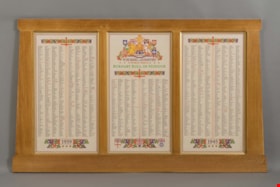
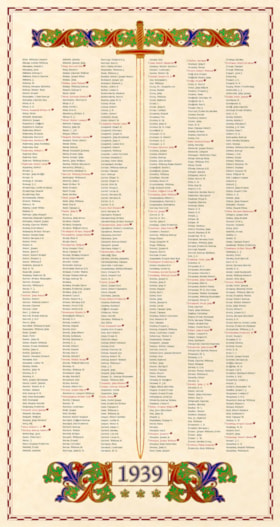
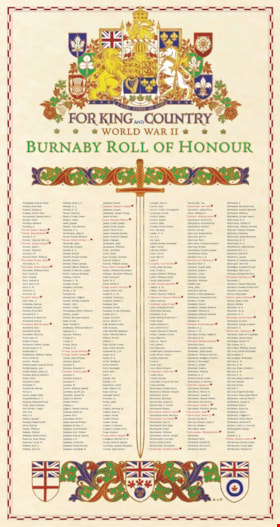
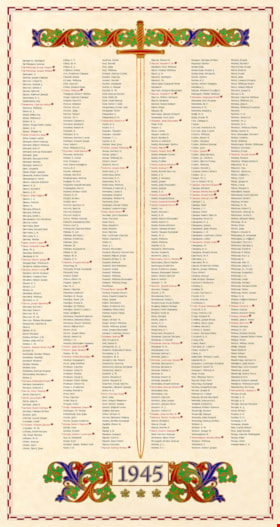
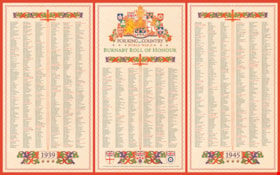
![Interview with Shirley Cohn, [1926-2023] (interview content), interviewed 2023 thumbnail](/media/Hpo/_Data/_BVM_Sound_Recordings/Oral_Histories/2023_0016_0001_001.JPG?width=280)


